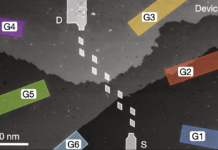Efficiency VS Inclusivity
Democratic process has been under fire in our covid-impacted world — there is the sense that democracy is not efficient when it is time to deal decisively with crisis. Certainly, COVID-19 plans are not being put up to public scrutiny (Munck, 2020). Alongside this, social distancing measures have fast-tracked the digitalization of our lives with ramifications for inclusion—patterns of engagement that were well underway prior to COVID-19 lockdowns and the ensuing work from home setups that remain in place for many that were once referred to as ‘office workers’.
Almost all engagement shifted online practically overnight, including planners’ attempts to engage with communities, aided by a constellation of network technologies. While methods and technologies continue to evolve, good quality engagement follows the same principles online and offline. The desired outcomes also remain unchanged — empowerment, consensus, advocacy, inclusion, trust, learning, conflict resolution, and deliberation — essentially, better informed decision-making for all parties involved (Milz and Gervich, 2021). As COVID-19 has threatened both the desire for and viability of participatory processes, online participatory technologies (OPTs) have attempted to fill this void.
Online participatory technologies come in two forms: synchronous (SOPTs), which allows participants to interact at the same time (e.g. video conferencing), and asynchronous (AOPTs), which does not (e.g. social media) (Milz and Gervich, 2021). Participatory decision-making is less efficient (by definition, as it involves deliberation), and quick decisions have become imperative during this period. Meeting in person has also been deemed too risky. While online participation carries the potential to reach more participants and to increase the transparency of bureaucratic decisions, it also holds the potential to deepen the digital divides reflective of existing social inequalities.
Isolation and Division: Digital Divides
The pandemic is having disproportionately negative impacts on certain communities. Facets of the digital divide include disparities in digital literacy and access, affordability, and usability. Not all places and people have the same level of access to high-speed Internet, for instance. Relying only on online participation could therefore have segregative effects.
OPTs can also open a window to stakeholders’ personal lives that then alter the dynamics of engagement. Previously, public meetings occurred in civic spaces, but they now occur in our homes (Milz and Gervich, 2021). With families contained indoors, video conference participation also includes simultaneously caring for infants, homeschooling children, preparing meals, tending to pets, and so on. This has the potential to alter how stakeholders view themselves and others, adding visible layers onto the power imbalances already present in civic participation spaces.
Other changes with OPTs include the reduced role of non-verbal cues that mediate face-to-face interactions and altered dynamics of discussion with one speaker at a time (Milz and Gervich, 2021). Before the pandemic, the same communities being disproportionately impacted by COVID-19 also faced barriers of access to hardware, software, and Internet connectivity. On top of this, scholarly research has demonstrated that technology platforms themselves are not neutral (Robinson and Johnson, 2021).
Reliance on these new OPTs can create a situation in which already marginalized communities are further excluded. There is also the potential for shallow forms of engagement to dominate these approaches to civic engagement via technology platforms, reducing opportunities for meaningful deliberation — or what some playful interaction scholars have referred to as ‘meaningful inefficiencies’ (Mugar and Gordan, 2020).
Transactional Participation
If we aren’t careful, we run the real risk that these tools undermine the very people they intend to help, exacerbating existing inequalities rather than alleviating them. Many scholars, such as Robinson and Johnson (2021), have warned against instilling a transactional relationship between citizens and government — effectively reducing the voice of the citizen to that of what can be easily collected via technology.
As citizens become removed from the more deliberative (challenging, involved, slower, traditional) forms of citizen engagement, and funneled towards the more transactional forms of engagement that are supported by technology, opportunities for robust, quality, civic discourse are lost, replaced with an emphasis on speed and quantity of connections (Robinson and Johnson, 2021).
This mode of platform participation produces a ‘transactional citizen’ that is intended to facilitate efficient decision-making backed by quantities of data rather than foster genuinely inclusive communities. This has the effect of instrumentalizing citizens without sharing decisional power (Thoneick, 2021). In contrast, offline settings promote richer forms of engagement that are more bottom-up in nature and focus on citizen perspectives and community priorities in a more complete form.
Online + Offline
Some scholars have characterized the key difference as ‘expressing preferences’ in online procedures versus ‘developing preferences’ in offline procedures (Thoneick, 2021). Employing more complex modes of communication and decision-making relates to onsite procedures generally having a higher capacity for developing authority and power — the higher rungs on Arnstein’s participation ladder.
On the one hand, online procedures (particularly AOPTs) hold the potential for including a larger number of participants as they are less bound to time and space and can be more easily squeezed into busy schedules. They also provide valuable opportunities for higher transparency in public policy and development plans, and concerning the inclusion of civic data into these plans, reducing the gap between politics and citizenship.
The relative ease of digital evaluation and analysis of contributions provides meaningful feedback to participants and thus promotes more transparent and accountable governance. On the other hand, OPTs have been seen to produce simple and singular commentary compared with the greater participant collaboration that is often observed in onsite participation settings (Thoneick, 2021). This suggests that a strategy involving both online and onsite participation can be fruitful, combining the strengths of both approaches rather than simply replacing the old with the new and attempting to recreate onsite engagement patterns superimposed onto online environments.
Concerning the integration of online and onsite participation in planning, Thoneick (p.5, 2021) suggests that critical elements for a digital participation system include “a comprehensible and reliable presentation of information such as public data, documents, and plans […] a visualisation of spatial data, plans, planning alternatives, designs and simulations […and] a digital feedback channel leading to the institutions responsible for the planning and allow citizens to voice their thoughts, criticism, ideas and comments in connection with planning projects.”
In defense of onsite participation, Milz and Gervich (p. 6, 2021) argue that:
We cannot afford to lose the forums in which we gather to declare our interests; to discuss, debate and settle our differences; and to make plans for our future. We cannot lose the places where we come together to share stories, to deliberate about next steps and to collectively heal. We cannot afford to lose any opportunity for direct, participatory democracy. Online participatory technologies offer hope and new spaces to carry out this work at a time when planners’ core functions – promoting interaction, deliberation and social innovation – are challenged.
Smart Communities
Smart cities are vulnerable to what has been termed by some scholars as a ‘techno-bureaucratic governance mode’, where a small number of readily monitored parameters replace the actual complexities of participatory engagement. The result is that social justice and local community concerns are frequently cast aside (Joss, Cook, Dayot, 2017). The challenge of COVID-19 for smarter communities from a planning perspective has been formidable. It involves the integration of what has traditionally been a deliberated, top-down public process with an organic bottom-up digital transformation in order to give an expanded voice to marginalized citizens during participation.
As Bricout et al. (2021) have argued, we must use the current state of social flux brought on by a global pandemic as an opportunity to effect transformation that results in more inclusive, rewarding communities. De Filippi et al. (2019) suggest that in the context of smart cities with networked ICT infrastructures, ‘smart communities’ are not simply service users offering data points to public decision-makers. Rather, they organize around collective issues and foster bottom-up inclusive planning approaches. They prioritize citizen participation and investments in human and social capital while emphasizing shared stakeholder interests and concerns.
Engaging citizen participation through shared interests and values is critical to redefining the relationship between people and their city (Bricout et al, 2021). For OPTs to be responsive to the social and ethical needs of specific communities of interest, the design of these technologies needs to be hyperlocal and based firmly on participation with the communities they intend to serve. Generic participation technologies and their consequent strategies are unlikely to produce the inclusive cities that we need in order to be more resilient.
References
Bricout, J., Baker, P., Moon, N. and Sharma, B. (2021). Exploring the Smart Future of Participation. International Journal of E-Planning Research, 10(2), pp.94-108.
De Filippi, F., Coscia, C., & Guido, R. (2019). From smart-cities to smart-communities: How can we evaluate the impacts of innovation and inclusive processes in urban context? International Journal of E-Planning Research, 8(2), 24–44.
Joss, S., Cook, M., & Dayot, Y. (2017). Smart cities: Towards a new citizenship regime? A discourse analysis of the British Smart City Standard. Journal of Urban Technology, 24(4), 29–49.
Milz, D. and Gervich, C. (2021). Participation and the pandemic: how planners are keeping democracy alive, online. Town Planning Review: Volume 92, Issue 3, 92(3), pp.335-341.
Mugar, G. and Gordon, E. (2020). Meaningful Inefficiencies: Civic Design in an Age of Digital Expediency. 1st ed. New York: Oxford University Press.
Munck, R. (2020). Higher Education, Civic Engagement, the Coronavirus and the ‘New Normal’.
Robinson, P. and Johnson, P. (2021). Pandemic-Driven Technology Adoption. International Journal of E-Planning Research, 10(2), pp.59-65.
Thoneick, R. (2021). Integrating Online and Onsite Participation in Urban Planning. International Journal of E-Planning Research, 10(1), pp.1-20.
Featured illustration: Mohamed Hassan





